1. Shrinking Back to Smaller Sizes
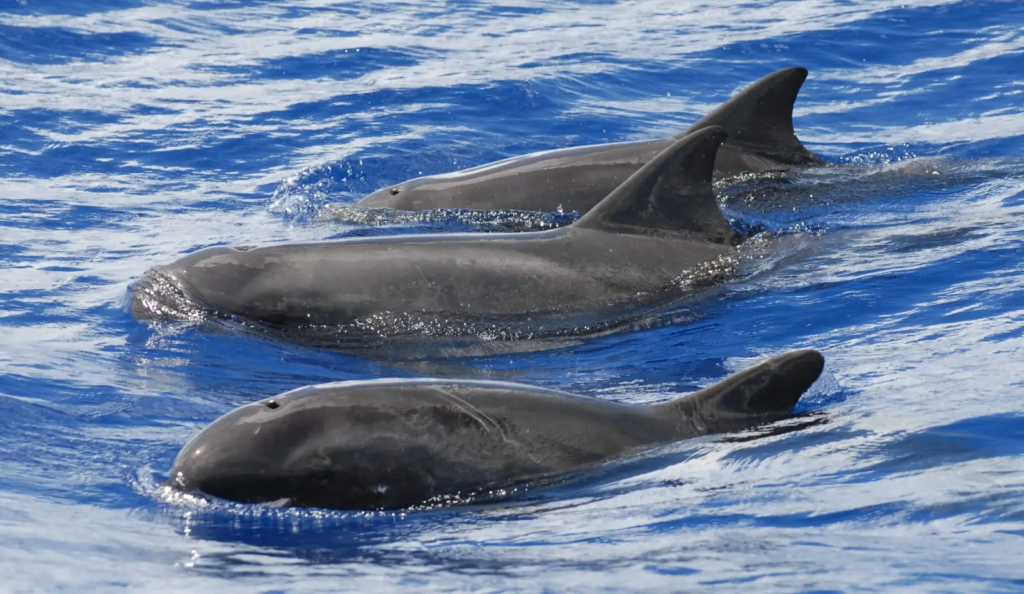
As ocean resources become scarcer due to overfishing and climate change, some whale species might evolve to be smaller. Compact bodies would require less energy to sustain, helping whales survive in food-scarce environments. Smaller whales would also be better at navigating tighter, shallower waterways, potentially opening up new habitats. This evolutionary shift could mimic the trend seen in some other marine species that have adapted to ecological pressures. However, smaller sizes could make them more vulnerable to predators, requiring the development of new defensive strategies. Over time, these compact whales might also exhibit changes in behavior, such as forming larger pods for safety. Their diets could shift to include smaller prey or plant-based options to cope with changing food supplies. This would result in cascading effects on the marine food web, as other species adapt to these changes. The trade-offs between size, energy efficiency, and survival could drive a fascinating evolutionary pathway.
2. Developing Amphibious Traits

Could whales return to land? If sea levels drastically recede or ocean ecosystems collapse, whales might evolve stronger fins or even vestigial limbs to maneuver on land and access new food sources. Amphibious whales would likely resemble their ancient ancestors, with robust, muscular fins that double as rudimentary legs. Such an adaptation could allow them to exploit new ecological niches, such as feeding on land-based vegetation or smaller terrestrial prey. Over time, their respiratory systems might also evolve to better handle the demands of life both in water and on land. This dual existence would require complex physiological changes, such as a more flexible skeletal structure for land mobility. Amphibious whales might even develop unique behaviors, such as seasonal migrations between aquatic and terrestrial habitats. While this shift could make them more versatile, it could also expose them to new predators and environmental challenges. These adaptations might initially occur in isolated populations, gradually spreading as they prove advantageous. The idea of whales reclaiming their terrestrial heritage is a testament to the unpredictable nature of evolution.
3. Enhanced Echolocation

With increasing underwater noise pollution, whales might develop more precise and complex echolocation abilities to communicate and hunt in chaotic sonic environments. These enhanced echolocation skills could involve higher frequencies that cut through man-made noise, allowing whales to detect prey and navigate effectively. Over time, whales might even evolve the ability to “see” detailed three-dimensional images of their surroundings using sound alone. This could lead to more efficient hunting techniques, as they identify and track prey with pinpoint accuracy. Enhanced echolocation might also improve their social communication, enabling them to convey more complex messages within their pods. Such advanced communication could foster stronger social bonds and cooperative behaviors. Whales might develop region-specific echolocation dialects, similar to how some species already have unique vocalizations. These adaptations could also lead to greater cognitive abilities, as processing detailed echolocation data would require advanced neural development. In turn, this might enable whales to adapt more quickly to changing environments. The evolution of echolocation could redefine the way whales interact with their underwater world.
4. Bio-luminescent Communication
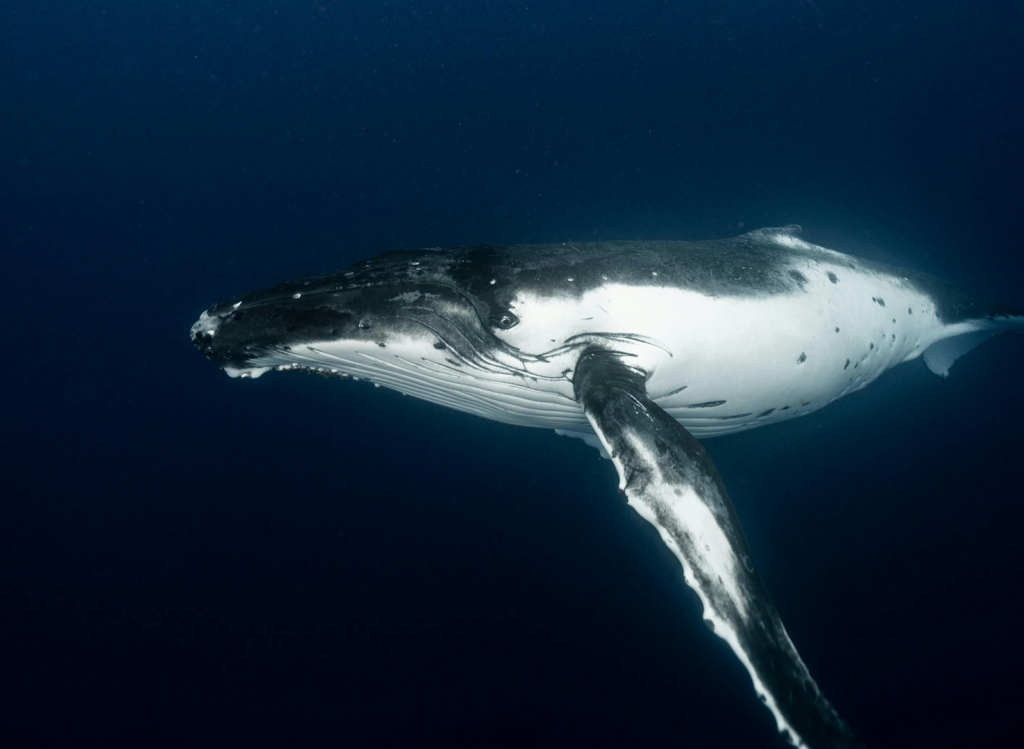
Whales could evolve the ability to produce light patterns on their bodies to communicate in the dark depths of the ocean, similar to some deep-sea creatures. This bio-luminescence might serve multiple purposes, including attracting mates, warning predators, or coordinating group activities. Patterns of light could act as a visual language, with specific sequences conveying complex messages. Over generations, these light displays might become more intricate and colorful, reflecting the social and environmental needs of each species. Bio-luminescent whales might also use their glowing patterns to confuse or deter predators, making them harder to target. In environments with little to no sunlight, this adaptation could replace vocalizations as the primary means of communication. Whales might even use their bio-luminescence to hunt, luring prey toward them with enticing light displays. This adaptation would likely involve significant changes to their skin and underlying tissues to produce and control light. Over time, bio-luminescent traits could lead to new social structures, as whales with the most intricate displays gain higher status. Such an evolution would make the underwater world even more vibrant and mysterious.
5. Adaptations for Extreme Depths
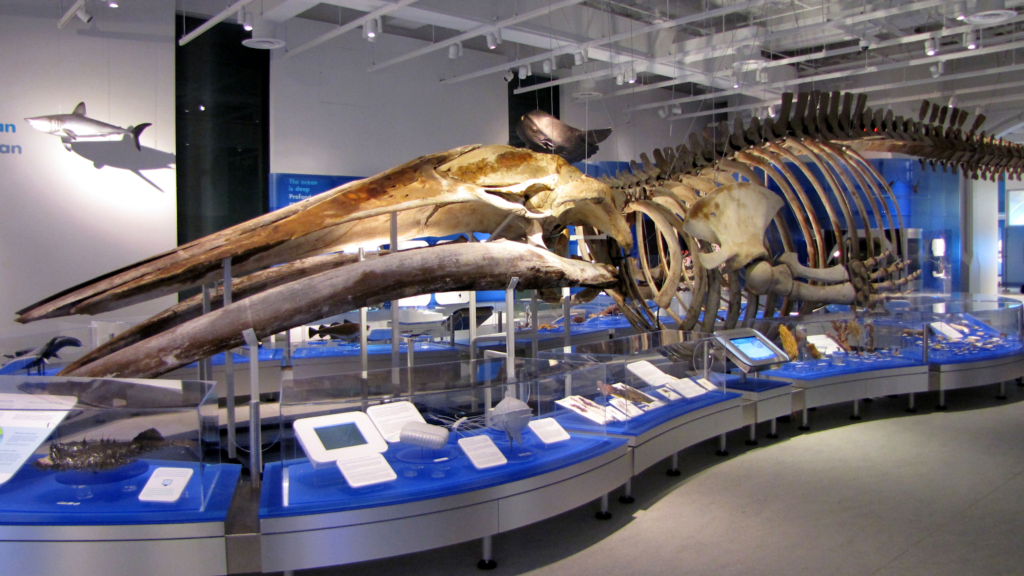
To escape human activity and find untapped resources, whales might evolve to live at greater depths, developing physiology to withstand intense pressure and cold. These deep-diving whales would require reinforced skeletal structures and specialized organs to prevent damage from extreme pressure. Their lungs might evolve to collapse and expand efficiently, minimizing the risk of decompression sickness. Adaptations to their circulatory systems could allow them to store and transport oxygen more effectively during long dives. Enhanced vision or echolocation tailored for pitch-black environments would be crucial for navigating the abyssal zones. Deep-diving whales might also develop bioluminescent traits to attract prey or communicate in these lightless depths. Over time, their diets could shift to include more deep-sea organisms, leading to changes in their hunting techniques. These adaptations could make them more isolated from surface ecosystems, creating entirely new subspecies or even species. However, living at such depths might limit their ability to interact with surface-dwelling whales, reducing genetic diversity. The evolution of deep-diving traits would redefine what we know about whale biology and their role in ocean ecosystems.
6. Symbiotic Relationships with Algae
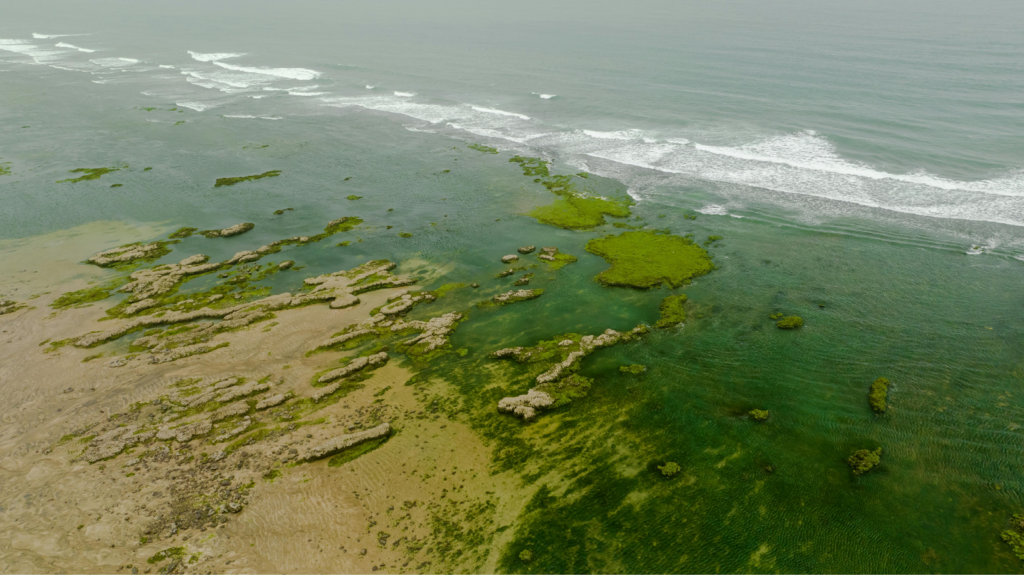
To adapt to a scarcity of food, whales might form symbiotic relationships with algae, hosting them on their skin and deriving energy from photosynthesis. These algae-covered whales could thrive in nutrient-poor waters, where traditional food sources are limited. The symbiotic algae would provide a supplementary energy source, particularly in sunny, shallow waters. Over time, whales might develop specialized skin structures to better support algae growth. This adaptation could make them less reliant on hunting, reducing competition with other marine predators. However, it might also make them more vulnerable to changes in sunlight availability, such as during storms or in polluted waters. Algae-covered whales could become unique ecosystems themselves, hosting other small marine organisms. These adaptations might lead to new migratory behaviors, as whales seek optimal sunlight conditions. The symbiosis could also influence their appearance, with their skin taking on green or brown hues. Such an evolutionary leap would demonstrate the incredible adaptability of whales to environmental pressures.
7. Filter Feeding on Plastic
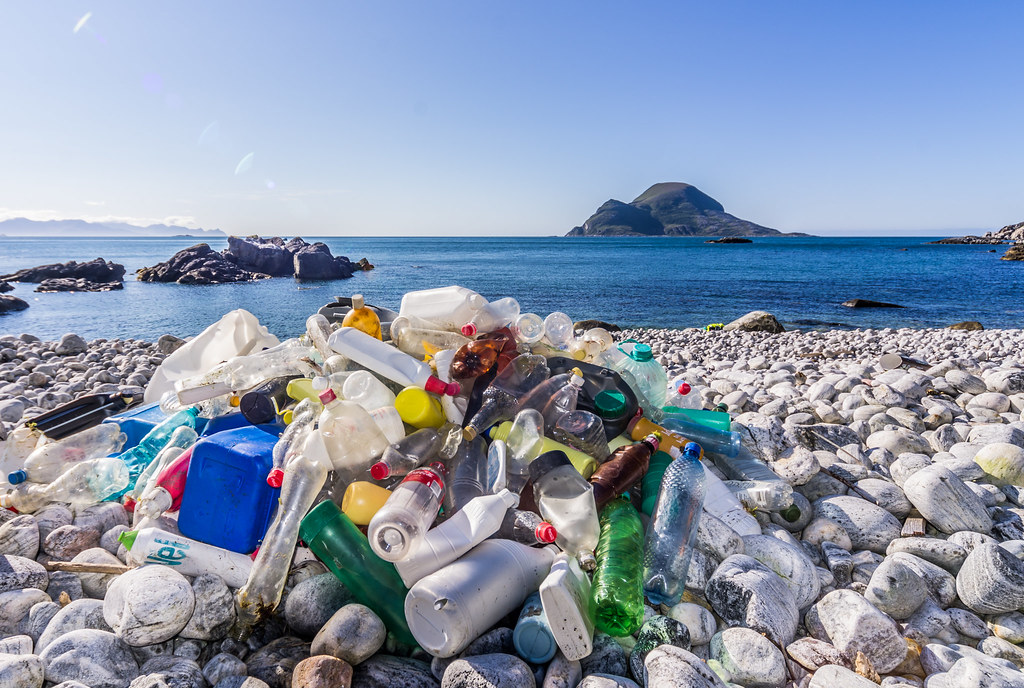
If plastic pollution continues to increase, some whales might adapt to digest and metabolize microplastics, turning waste into a food source. These “plastic-eating” whales could evolve specialized enzymes in their stomachs to break down synthetic materials. Over generations, their digestive systems might become highly efficient at extracting energy from plastics. This adaptation could help mitigate the growing problem of ocean pollution, transforming a threat into an advantage. However, relying on plastics as a food source might lead to unforeseen health issues, such as toxic buildup in their tissues. Plastic-eating whales could become a keystone species in cleaning up the oceans, indirectly benefiting other marine life. Their role in the ecosystem might shift significantly, as they help reduce pollution levels. These adaptations could also lead to changes in their social behaviors, as they congregate in highly polluted areas. Over time, their diets might expand to include other synthetic materials, further altering their ecological niche. This evolution would highlight the interplay between human activity and natural adaptation.
8. Airborne Whales

Why stop at the ocean? Over millions of years, whales might evolve structures to glide or even fly, accessing aerial ecosystems to escape oceanic predators and explore new habitats. Airborne whales would likely develop lightweight, aerodynamic bodies and large, wing-like fins for propulsion. Such adaptations would require a complete overhaul of their respiratory systems to handle the demands of flight. Their diets might shift to include aerial prey, such as birds or flying insects, as well as surface-dwelling fish. Over time, these flying whales could establish entirely new ecological roles, bridging the gap between marine and aerial environments. Their social behaviors might also evolve, with complex flight patterns becoming a form of communication or courtship. Airborne whales could migrate vast distances, exploring territories previously inaccessible to marine life. However, the energy demands of flight might limit their size and reproduction rates, creating trade-offs in their evolution. This speculative adaptation would redefine what it means to be a whale. The idea of flying whales showcases the limitless potential of evolutionary creativity.
9. Longer Lifespans

Animalia
To counterbalance slower reproduction rates, whales could evolve to live even longer, perhaps reaching centuries-old lifespans to ensure species survival. These long-lived whales would require enhanced cellular repair mechanisms to prevent age-related diseases. Over generations, their bodies might develop resistance to cancer and other degenerative conditions. Longer lifespans could allow whales to accumulate vast amounts of knowledge, improving their survival strategies. Such extended longevity might also foster stronger social bonds within pods, as generations coexist and learn from one another. These adaptations could make whales even more intelligent, as they process and utilize information over their extended lives. However, longer lifespans might also make them more vulnerable to human activity, as their populations grow more slowly. These whales might play a larger role in their ecosystems, influencing other species over longer periods. Over time, their evolution could create a new balance in marine environments. The prospect of near-immortal whales highlights the complex interplay between biology and survival.
10. Advanced Tool Use
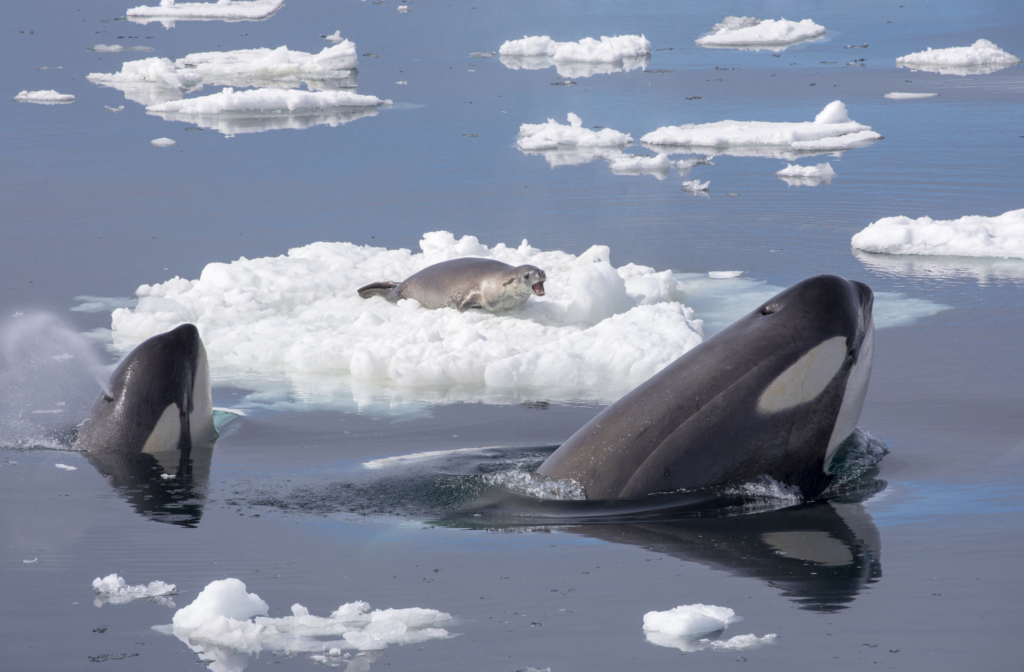
Wikimedia Commons
Whales already demonstrate intelligence, but they could evolve more dexterous appendages or behaviors to use tools for hunting, defense, or communication. These adaptations might involve changes to their fins, making them more flexible and capable of grasping objects. Advanced tool use could allow whales to manipulate their environment, such as breaking ice to access prey or crafting protective structures. Over generations, this behavior could become ingrained in their culture, with tool-making skills passed down through generations. Enhanced cognitive abilities might accompany these changes, allowing whales to solve complex problems more effectively. Tool use could also foster new social behaviors, as whales collaborate on intricate tasks. These adaptations might shift their role in the ecosystem, making them apex problem-solvers as well as predators. Whales could even develop tools to interact with humans, bridging the gap between our species. This evolutionary leap would blur the line between instinct and learned behavior. Advanced tool use would mark a significant milestone in the evolution of marine intelligence.
11. Thermoregulation in Warmer Waters
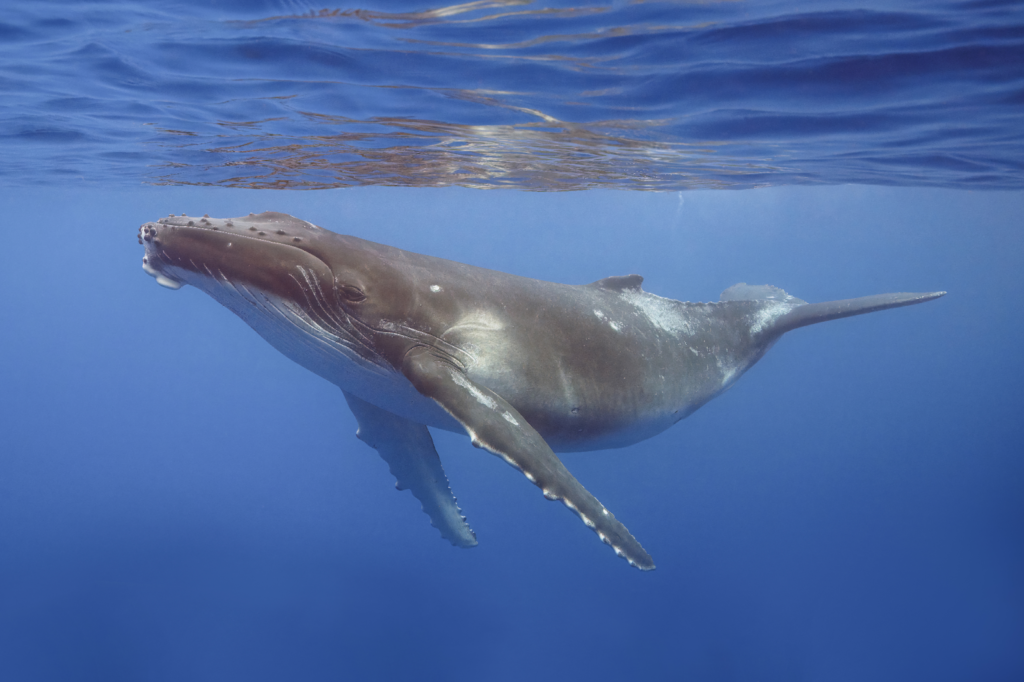
Wikimedia Commons / Charles J Sharp
As oceans warm, whales might evolve thinner blubber or new heat-dissipating mechanisms to survive in tropical seas. These adaptations could involve changes to their circulatory systems, allowing them to release heat more efficiently. Over time, their physical appearance might change, with sleeker bodies better suited to warm environments. Whales might also develop behaviors to avoid overheating, such as seeking shade or migrating to cooler waters during the hottest months. These adaptations could enable them to exploit food sources in previously inhospitable regions. However, surviving in warmer waters might expose them to new predators and parasites, requiring additional defensive traits. Changes in their diets could accompany these shifts, as they adapt to tropical prey species. Thermoregulation might also influence their social structures, as pods adjust their behaviors to cope with heat. Over generations, these adaptations could result in entirely new whale species optimized for warm climates. The evolution of thermoregulation demonstrates the dynamic relationship between environment and survival.


